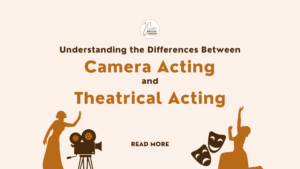Acting is a complex art form that involves the expression of a range of emotions and experiences through body language, voice modulation, and facial expressions.
Navarasas, which are nine basic emotions, are an integral part of Indian classical dance and theatre. They provide a framework for actors to understand and convey the various nuances of human emotions.
Nirguna Acting School helps you understand the nine navarasas of acting, along with their meanings and examples of how they can be portrayed on stage or screen.
Shringara (Love)
Shringara is the emotion of love and desire. It is expressed through gestures, facial expressions, and movements. For example, a smile, a loving glance, or a gentle touch can convey shringara.
Hasya (Comedy)
Hasya is the emotion of comedy and laughter. It can be portrayed through exaggerated facial expressions, physical comedy, and witty dialogue. For example, a silly dance, a funny accent, or a clever joke can evoke hasya.
Karuna (Compassion)
Karuna is the emotion of compassion and empathy. It can be conveyed through expressions of sadness, grief, or sympathy. For example, tears, a trembling voice, or a comforting gesture can express karuna.
Raudra (Anger)
Raudra is the emotion of anger and aggression. It can be expressed through body language, tone of voice, and facial expressions. For example, clenched fists, a raised voice, or a scowling face can convey raudra.
Veera (Heroism)
Veera is the emotion of heroism and courage. It can be portrayed through strong and confident body language, intense facial expressions, and determined speech. For example, a defiant stance, a resolute expression, or an inspiring speech can evoke veera.
Bhayanaka (Fear)
Bhayanaka is the emotion of fear and terror. It can be conveyed through trembling, sweating, and a rapid heartbeat. For example, a terrified expression, a quivering voice, or a hasty retreat can express bhayanaka.
Bibhatsa (Disgust)
Bibhatsa is the emotion of disgust and revulsion. It can be portrayed through facial expressions, body language, and vocal cues. For example, a wrinkled nose, a shuddering body, or a retching sound can evoke bibhatsa.
Adbhuta (Wonder)
Adbhuta is the emotion of wonder and amazement. It can be conveyed through expressions of awe, surprise, or curiosity. For example, a wide-eyed stare, an open-mouthed gasp, or a joyful exclamation can express adbhuta.
Shanta (Peace)
Shanta is the emotion of peace and tranquility. It can be portrayed through calm and composed body language, a soft and soothing tone of voice, and a relaxed facial expression. For example, a serene smile, a gentle touch, or a peaceful gaze can evoke shanta.
In conclusion, navarasas are a vital aspect of acting, providing actors with a framework to understand and express a range of emotions. By mastering the art of conveying these emotions effectively, actors can create memorable performances that resonate with audiences long after the show is over.





